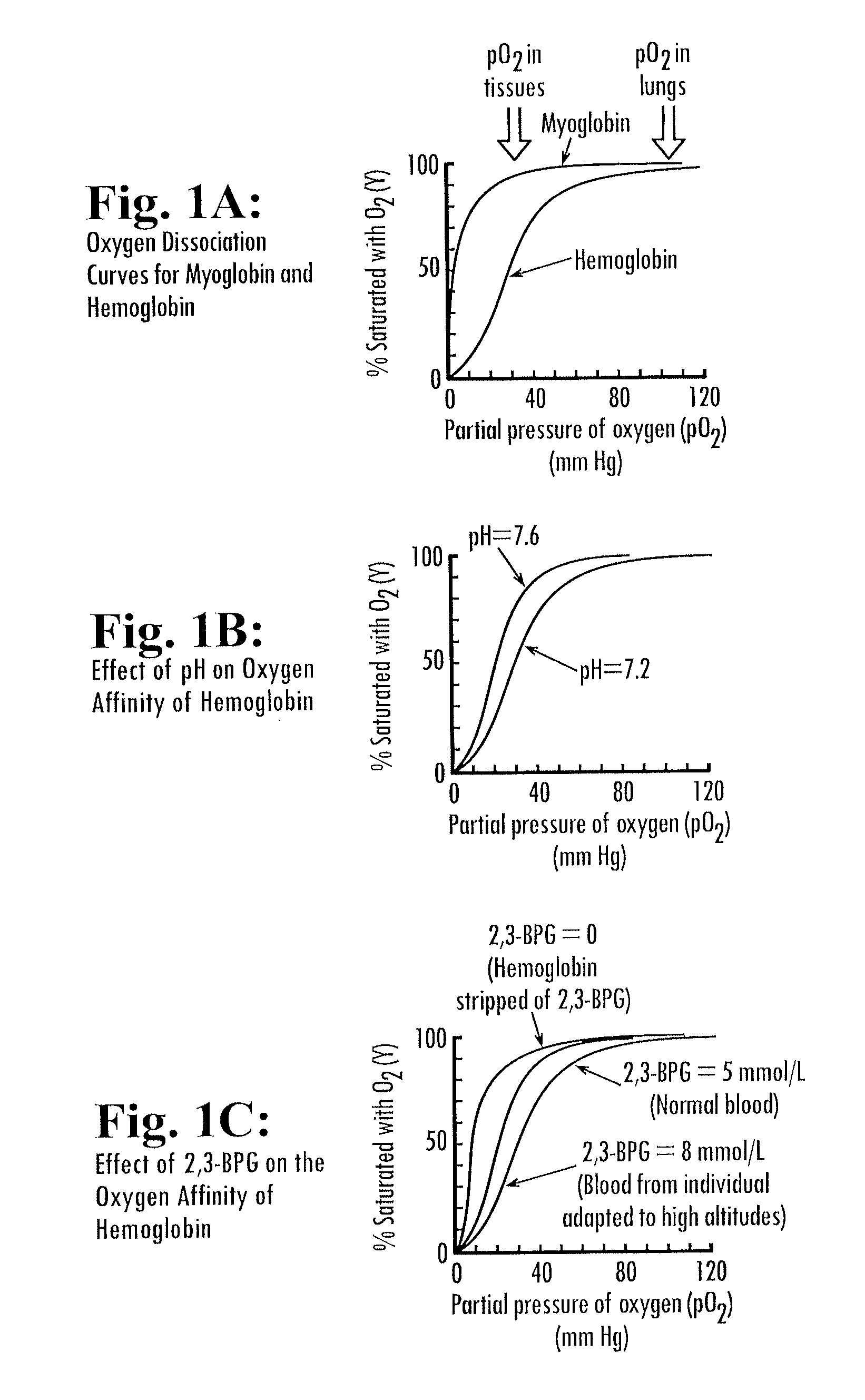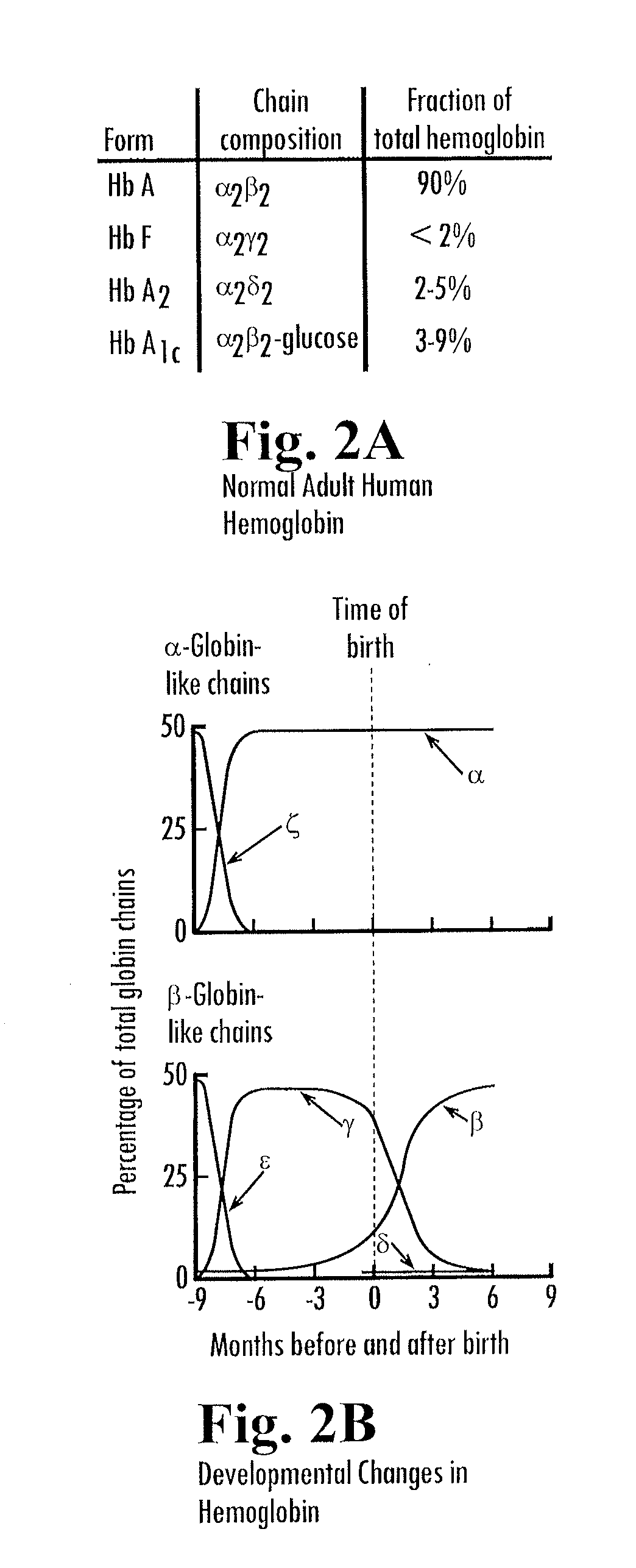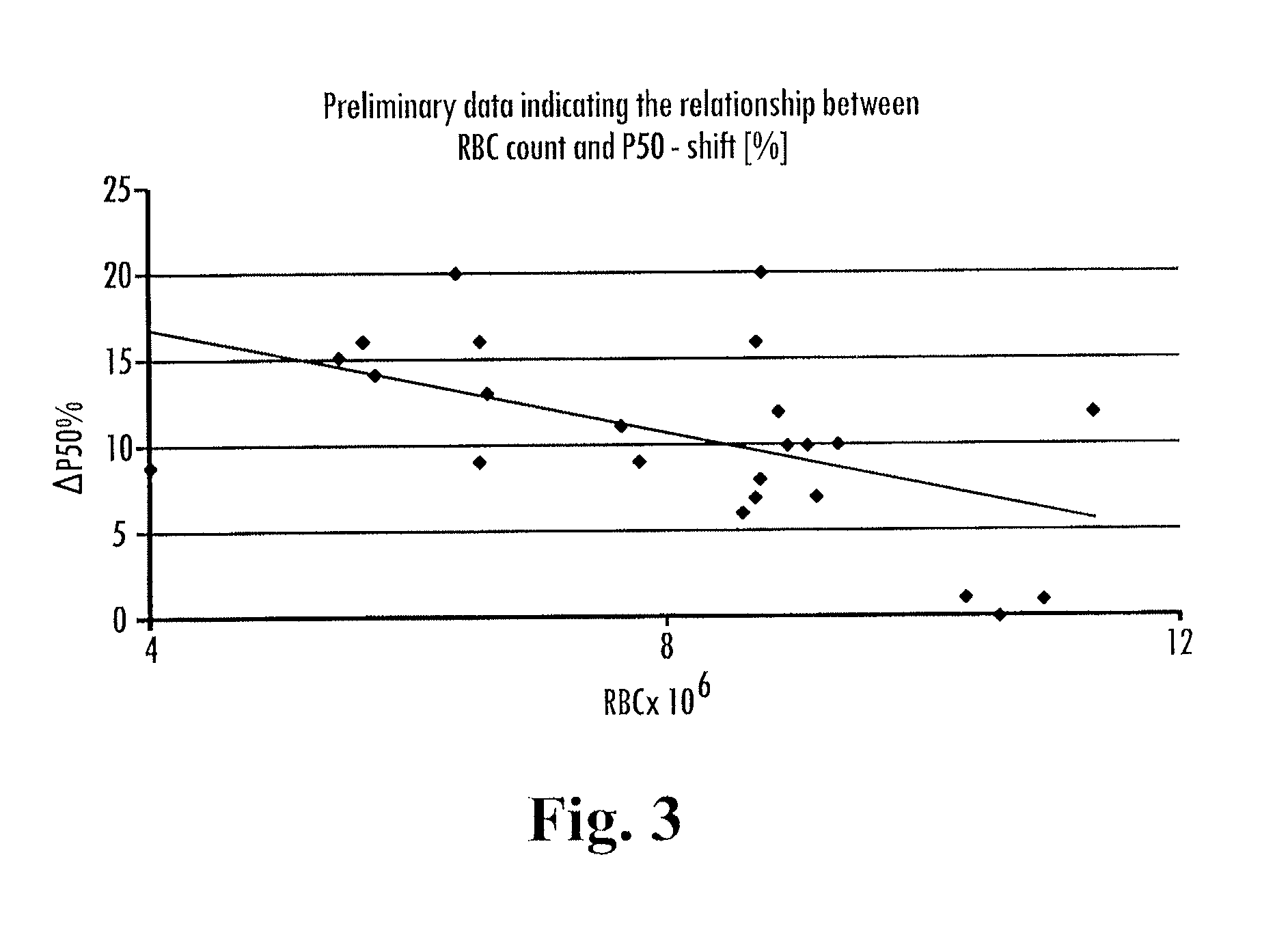Erythropoletin complementation or replacement
a technology of erythropolymer and complementation or replacement, which is applied in the direction of phosphorous compound active ingredients, extracellular fluid disorders, peptide/protein ingredients, etc., can solve the problems of little oxygen transported by blood plasma, poor reproducibility of ihp concentrations incorporated in red blood cells, and infants who are significantly prematurely born. , to achieve the effect of well tolerated
- Summary
- Abstract
- Description
- Claims
- Application Information
AI Technical Summary
Benefits of technology
Problems solved by technology
Method used
Image
Examples
example 1
Oral Administration of Tri-Pyrophosphates
[0106]Twelve C57BL / 6 mice drank ITPP over 4 days (about 25 ml / 24 hrs). Seven Control mice drank either pure water (three mice), or a solution of IHP (inositol hexaphosphate without the internal pyrophosphate rings) at the same concentration and pH as ITPP (4 mice). The amount of fluid ingested was the same when offering pure water, IHP-water or ITPP-water, indicating that ITPP-, or IHP-solution was not rejected by the mice. Blood was collected from the tail vein of the 12 C57BL / 6 mice on day 0 (before treatment started), 1, 2, 4, 6, 7, 8, 10, 11 and 12, in order to measure P50 values. No C57BL / 6 mouse seemed to suffer by this treatment. Oral application of ITPP caused significant right shifts of P50 (up to 31%) in mice.
[0107]The 12 mice were observed over 12 days, the P50 values of their circulating RBC were measured almost daily. FIG. 9 shows the time course of the induced right shift of the ODC (oxyhemoglobin dissociation curve) P50 (up to ...
example 2
Blood Counts of ITPP-Treated and Control Mice
[0108]Blood from mice that ingested ITPP or IHP in water (for 4 days) or water only was collected on day 0, 7 and 11, in order to assess any differences in the blood count (and the amount of erythropoietin in the sera) of treated and control mice. Two major observations were made: 1) the number of RBCs in mice having ingested ITPP was reduced significantly, and 2) there were no major differences in the number of white blood cells (e.g. granulocytes, macrophages etc.) in blood from mice in different groups. Table 1 shows the RBC counts for mice with shifted ODC as compared to controls.
TABLE 1Number of RBC and P50 shifts of treated and controlanimals determined on days 7 and 10 of the experimentP50RBC ×P50RBC ×ITPPday 7, %106 / mm3day 10, %106 / mm3Mouse 177.7088.73Mouse 3166.54117.65Mouse 496.5497.80Mouse 5136.60109.35Mouse 6145.7368.60Mouse 7206.35108.95Mouse 8165.64128.88Mouse 11155.45108.95Mouse 12208.76168.70Water79.181211.35Water48.7110.9...
example 3
Intravenous Injection of ITPP to a Normal Piglet
[0115]An in vivo experiment was performed on one 8 week-old normal piglet (body weight: 17 kg). The piglet was anesthesized with 5% Isoflurane, 0.7 L / min N2O and 2.0 L / min O2 for 20-30 minutes, when ITPP was injected, or blood was taken from the ear vein, respectively. The compound injected intravenous at a concentration of 27 g ITPP / 100 ml water (volume injected: 63 ml, pH 6.5, containing 17 g ITPP=1 g / l kg body weight) was not harmful to the animal, when injected into the piglet's ear vein over at least 10 minutes. The P50 values of the porcine blood obtained during a two-week period after intravenous injection are shown in FIG. 10 versus the control.
PUM
| Property | Measurement | Unit |
|---|---|---|
| molecular weight | aaaaa | aaaaa |
| oxygen partial pressure | aaaaa | aaaaa |
| oxygen partial pressure | aaaaa | aaaaa |
Abstract
Description
Claims
Application Information
 Login to View More
Login to View More - R&D
- Intellectual Property
- Life Sciences
- Materials
- Tech Scout
- Unparalleled Data Quality
- Higher Quality Content
- 60% Fewer Hallucinations
Browse by: Latest US Patents, China's latest patents, Technical Efficacy Thesaurus, Application Domain, Technology Topic, Popular Technical Reports.
© 2025 PatSnap. All rights reserved.Legal|Privacy policy|Modern Slavery Act Transparency Statement|Sitemap|About US| Contact US: help@patsnap.com



